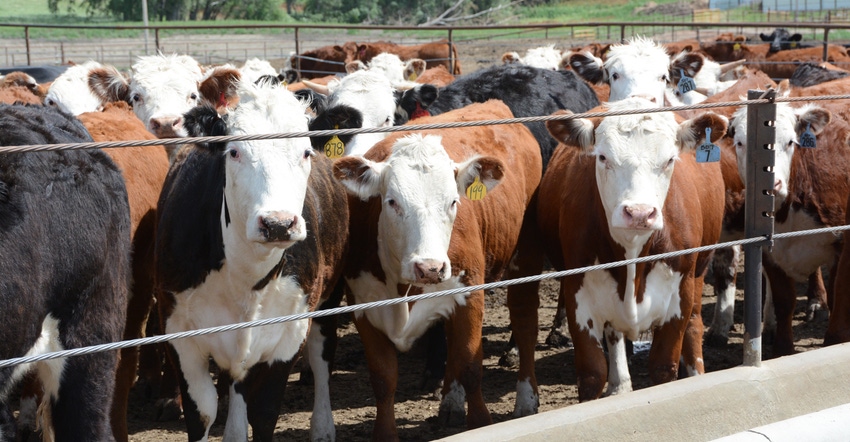Get back to basics with cattle health
After a drought year, beef producers should pay attention to feed and water quality.

Cattle producers often reach for some magic elixir to keep their herd healthy, when in reality simply getting back to the basics can go a long way.
Dale Blasi, Kansas State University Extension beef specialist, says polishing off and practicing good animal husbandry skills can help in keeping cattle healthy.
He says there are few items that should be on every farmer’s checklist, such as paying attention to the cleanliness of the water tank, ensuring that animals have adequate comfort in their pen environment, making sure feed bunks are cleaned routinely, and providing good quality ration ingredients — along with appropriate mixing times.
Holding true to the old adage of paying attention to the animals, as they will tell you when something is wrong, Blasi suggests keeping “a good eye on the animals, seeing when they need to be pulled. I mean you have got to get to early treatments” when necessary.
Concerns from drought
With many of the country’s cattle-raising areas hit by drought this year, Blasi says farmers should watch for the potential for mycotoxins in grains.
Being aware of the quality of the feedstuffs is important, Blasi says. “Dry matter intake is an excellent barometer of animal thriftiness. … Animals that have a good appetite are always a good bellwether for an animal’s health,” he adds.
Another side effect of drought-stressed environments is nitrates or the accumulation of nitrates in feedstuffs. Blasi points to areas such as North Dakota, South Dakota, Montana and even more so into Canada where this has been a problem. In a North Dakota State University Extension press release, specialists warn of toxic nitrate levels in annual forages such as wheat, barley and oats, as well as brassicas, millet, sorghum, sudangrass and standing corn.
The NDSU release stresses that nitrate toxicity is most commonly a problem in ruminants, with cattle more susceptible than sheep. Dietary concentrations above 1,000 parts per million of NO3-N (nitrate-nitrogen) or 7,220 ppm of KNO3 (potassium nitrate), depending on the laboratory analysis performed, can result in nitrate poisoning.
Nitrates in feed should be top of mind, Blasi notes, “especially for producers that are getting into the third trimester of pregnancy for their spring-calving cows.” He says knowing the quality of feedstuffs is important. NDSU specialists recommend testing forages for nitrate content.
“Once nitrate levels are known, grinding and blending low- and high-nitrate hay is the best strategy to reduce risk,” NDSU Extension beef cattle specialist Zac Carlson says in the press release. “If producers cannot grind and blend hay, unroll low-nitrate hay first, wait for cattle to consume most of the low-nitrate hay and then unroll the high-nitrate hay. In addition, providing a couple of pounds of grain per animal daily can help reduce the risk of nitrate toxicity.”
Don’t forget the water
While quality feedstuffs are important for the health and performance of beef cattle, Blasi stresses that quality water sources cannot be discounted.
“Clean water reservoirs are critical,” he says. “You cannot ignore the quality of the water both in terms of what’s in it and any kind of fecal debris.”
Regular, possibly weekly, scrubbing of water tanks can go a long way in ensuring cattle are receiving the highest-quality water, and Blasi feels that procedure is a common protocol in well-run feedyards.
“We just cannot understate good husbandry,” Blasi says. “It’s so critical, and I think sometimes we miss the forest for the trees.”
About the Author(s)
You May Also Like



